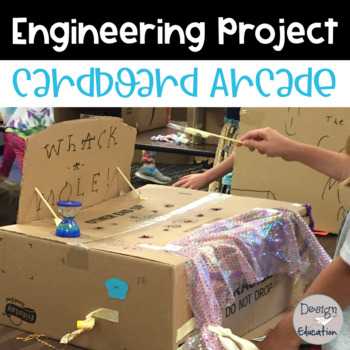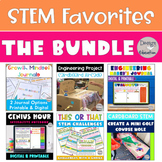STEM Project Cardboard Arcade | Caine's Arcade Challenge
- PDF
- Google Apps™

What educators are saying
Also included in
- STEM Challenge Bundle includes 3 of my top selling STEAM projects. The challenges are low prep and NGSS aligned. Your engineers will be using the design process to reinvent a product on the market, create an arcade out of cardboard, and create a focus tool.By purchasing the 3 STEM challenges in aPrice $5.04Original Price $9.50Save $4.46
- Get all of the most popular STEM resources in one bundle! These low prep STEAM activities include 3 STEM challenges, 1 Genius Hour project, and 2 student journals. Hands-on STEM challenges are easy to set up because they use recyclable materials and walk students through the Engineering Design ProcPrice $12.88Original Price $23.00Save $10.12
Description
Newly updated, now includes digital and printable versions! This STEM project gives students the opportunity to create an arcade out of cardboard! It is a highly engaging activity that will take your students through the Engineering Design Process! It also incorporates optional math concepts such as computation, determining area/perimeter, and identifying/creating polygons. It is simple to use just print and the students can begin building using recycled materials. Be ready for your students to have a blast and inspire the entire school community!
This product includes:
- Digital Student Engineering Notebook
- Printable Student Engineering Notebook
- Teacher Direction Pages
- Suggested Recycled Material Page
- Family Letter
- Optional Student pages-partner feedback, student rubric, teacher rubric, engineering certificate and pictures of actual classroom cardboard games
The Practices of Science and Engineering in NGSS
1. Asking questions (for science) and defining problems (for engineering)
2. Developing and using models
3. Planning and carrying out investigations
4. Analyzing and interpreting data
5. Constructing explanations (for science) and designing solutions (for engineering)
6. Engaging in argument from evidence
7. Obtaining, evaluating, and communicating information
If you like this design project, check out my others
Would you like to know when I post new resources and they are 1/2 off for 48 hours? Simply follow me on TPT!







